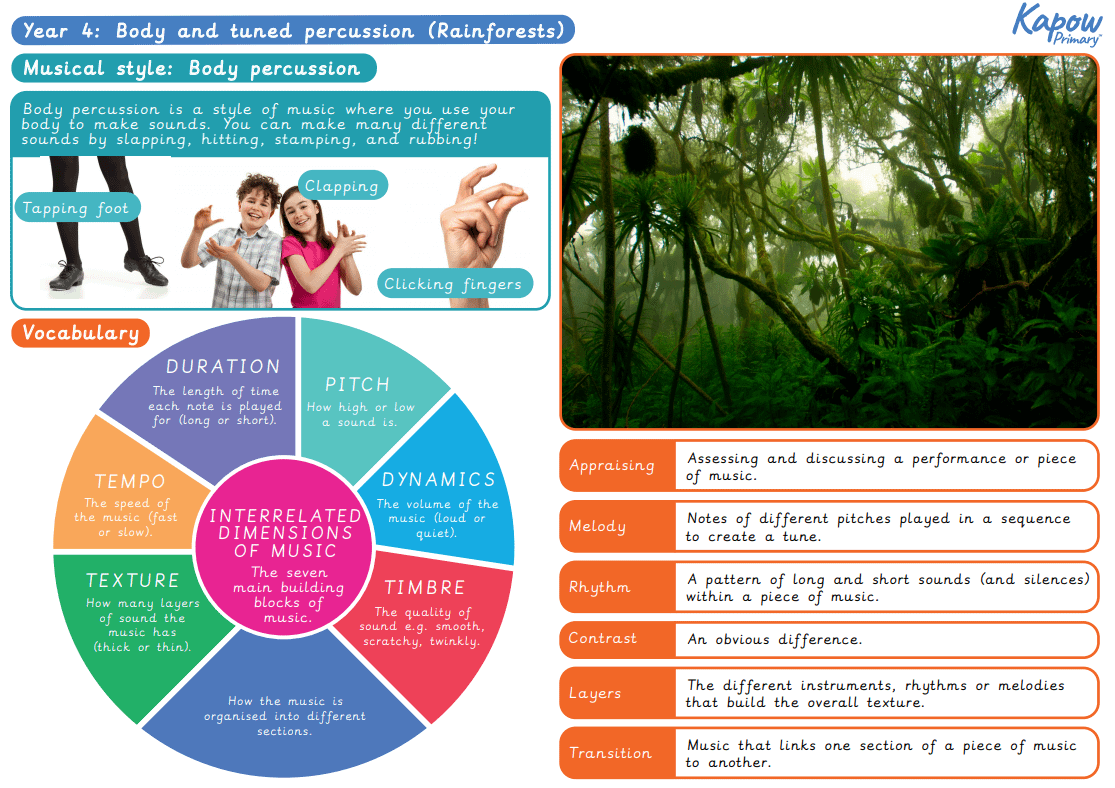
A Knowledge Organiser that captures the essential knowledge and skills learnt throughout the unit Music, Year 4, Body and Tuned Percussion (Theme: Rainforests).
This resource supports pupils as they explore the vibrant sounds of the rainforest through body percussion and tuned instruments. It introduces key vocabulary and concepts such as rhythm, melody, texture, dynamics, timbre, and pitch, helping pupils understand how different sounds and layers create musical compositions. The unit encourages pupils to use their bodies—clapping, tapping, and stamping—as well as instruments like glockenspiels and xylophones to represent rainforest environments. By engaging with these musical elements, pupils develop their ability to compose, perform, and appraise music that reflects natural soundscapes.
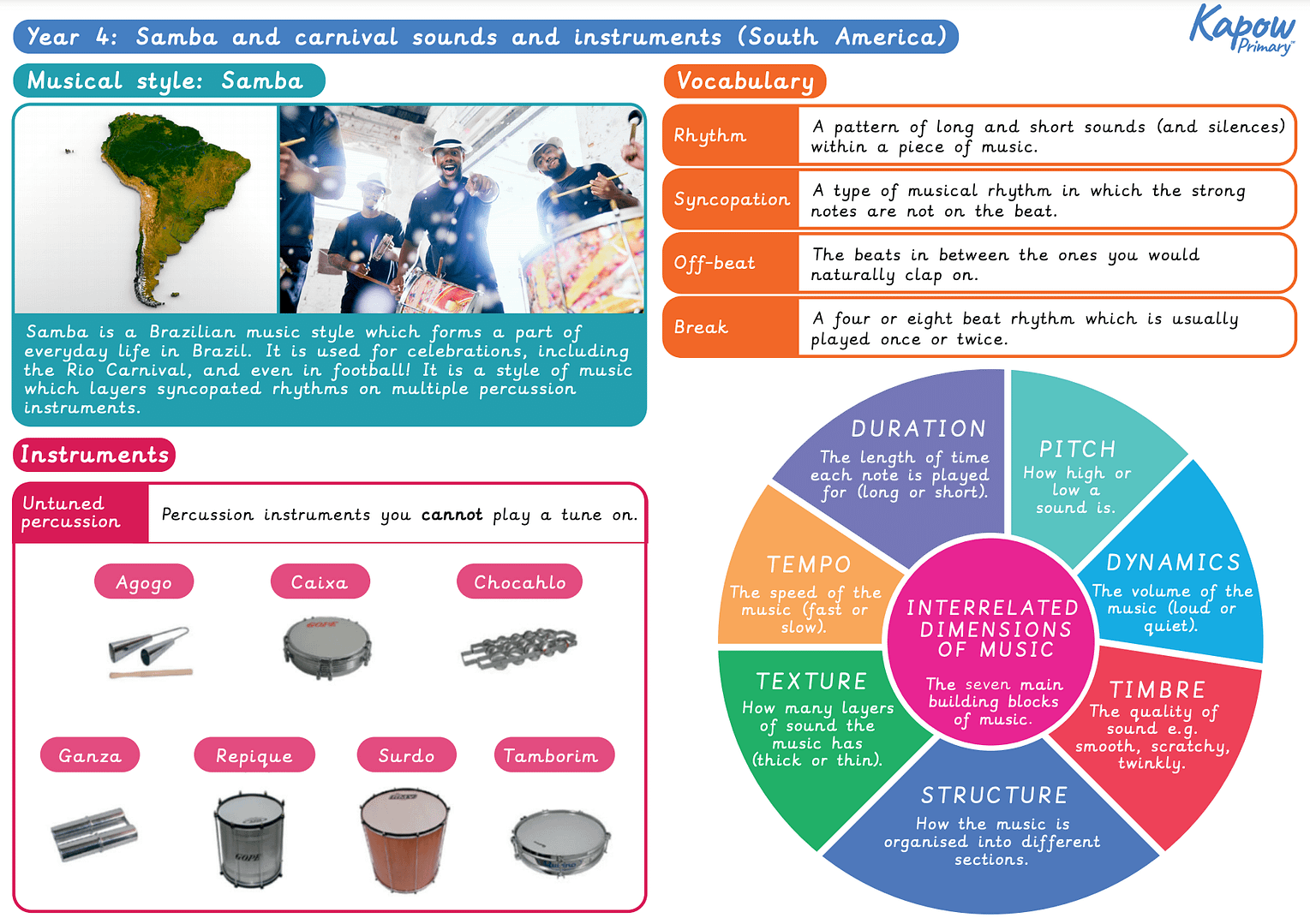
A Knowledge Organiser that captures the essential knowledge and skills learnt throughout the unit Music, Year 4, Samba and carnival sounds and instruments (Theme: South America).
This resource supports pupils as they explore the vibrant rhythms and cultural significance of Brazilian samba music. It introduces key vocabulary and concepts such as rhythm, syncopation, off-beat, and break. The unit also familiarizes pupils with traditional samba instruments like the agogo, caixa, chocalho, ganza, repique, surdo, and tamborim, emphasizing their roles in producing samba’s distinctive sound. By engaging with these elements, pupils develop their ability to perform and compose samba rhythms, fostering both musical skills and cultural appreciation.
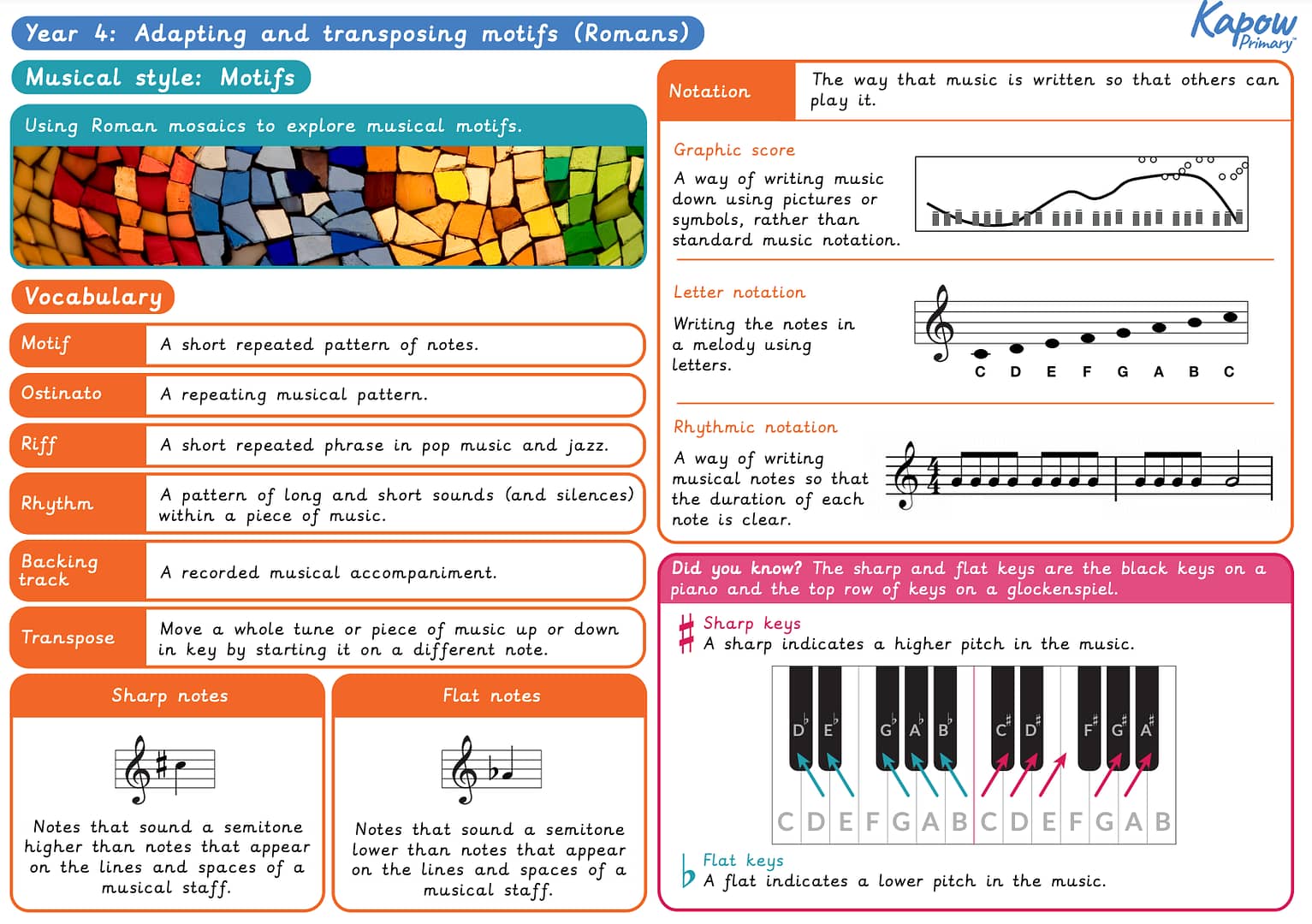
A Knowledge Organiser that captures the essential knowledge and skills learnt throughout the unit Music, Year 4, Adapting and transposing motifs (Theme: Romans).
This resource supports pupils as they explore musical motifs within the context of Roman history. It introduces key vocabulary and concepts such as motif, ostinato, transpose, rhythm, and notation, helping pupils understand how short, repeated patterns can be developed and transformed. The unit encourages pupils to compose and notate their own motifs, experiment with transposition using sharp and flat notes, and perform their compositions using letter notation and graphic scores. By engaging with these musical elements, pupils enhance their compositional skills and deepen their understanding of musical structure and expression.
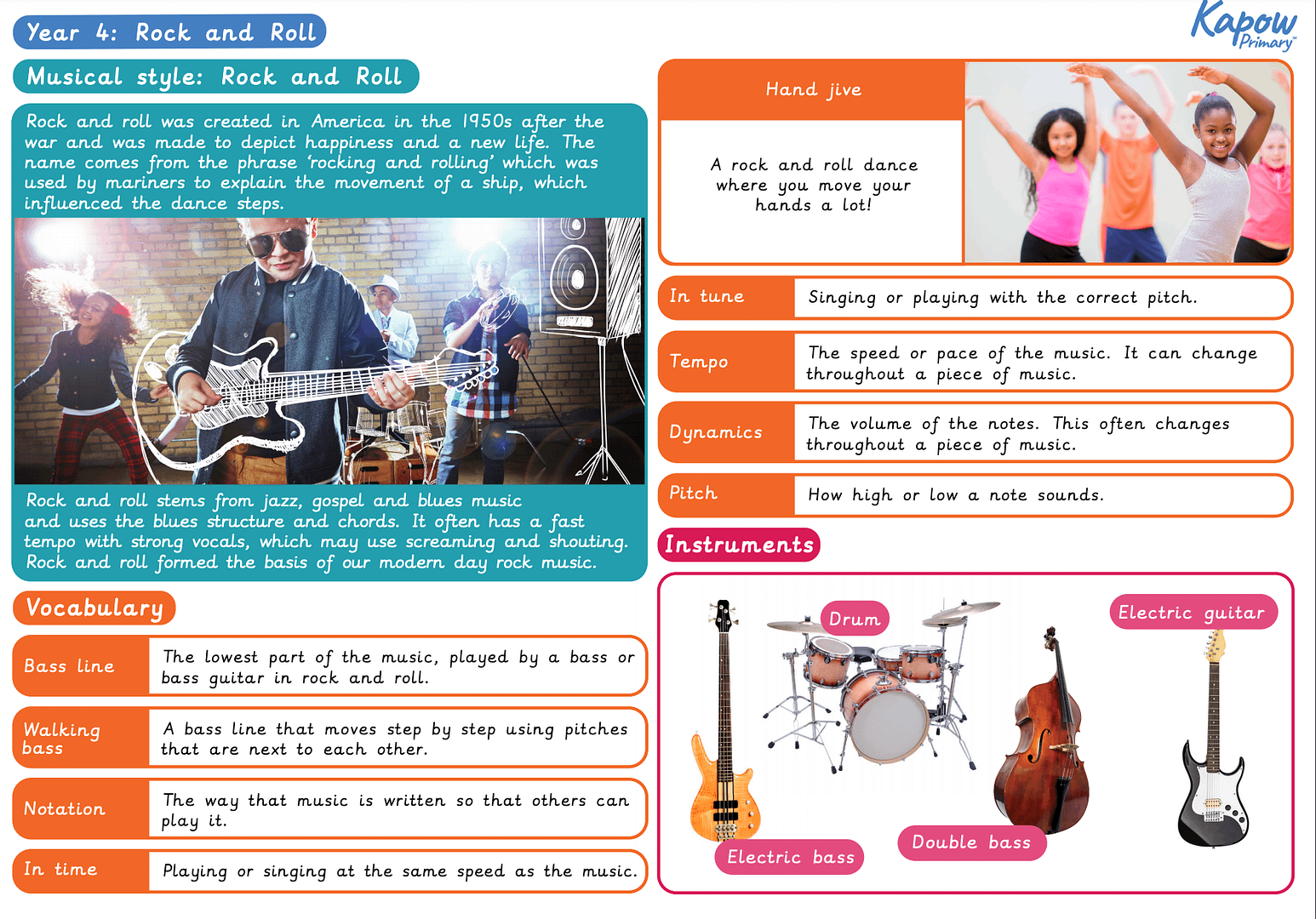
A Knowledge Organiser that captures the essential knowledge and skills learnt throughout the unit Music, Year 4, Rock and Roll.
This resource supports pupils as they explore the origins and characteristics of rock and roll music, a genre that emerged in 1950s America. It introduces key vocabulary and concepts such as walking bass, bass line, tempo, dynamics, pitch, and hand jive, helping pupils understand the musical elements that define rock and roll. The unit also highlights the influence of jazz, gospel, and blues on the development of rock and roll, and encourages pupils to engage with instruments like the drum, double bass, electric guitar, and electric bass. Through this exploration, pupils develop their musical understanding and performance skills.
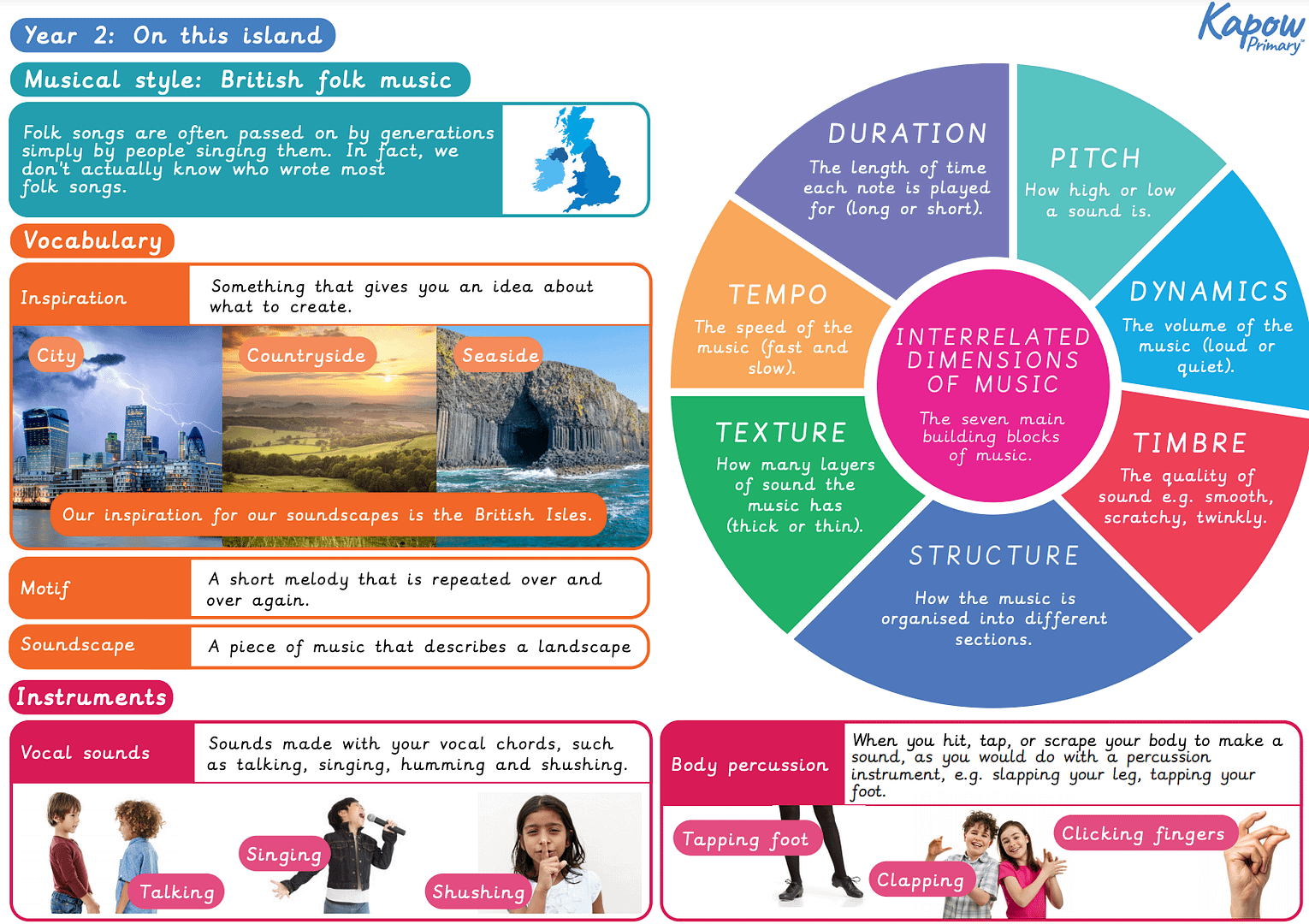
A Knowledge organiser that captures the essential knowledge and skills learnt throughout the now archived unit Music, Year 2, On This Island.
This Music resource is designed to support the pupils as they explore how music can be used to represent different aspects of an island environment. It introduces key vocabulary such as dynamics, tempo, pitch, texture, and structure, helping the pupils understand how composers use musical elements to depict landscapes and moods. The pupils will also learn how to create their own compositions inspired by island settings, using instruments and vocal sounds to represent natural features.
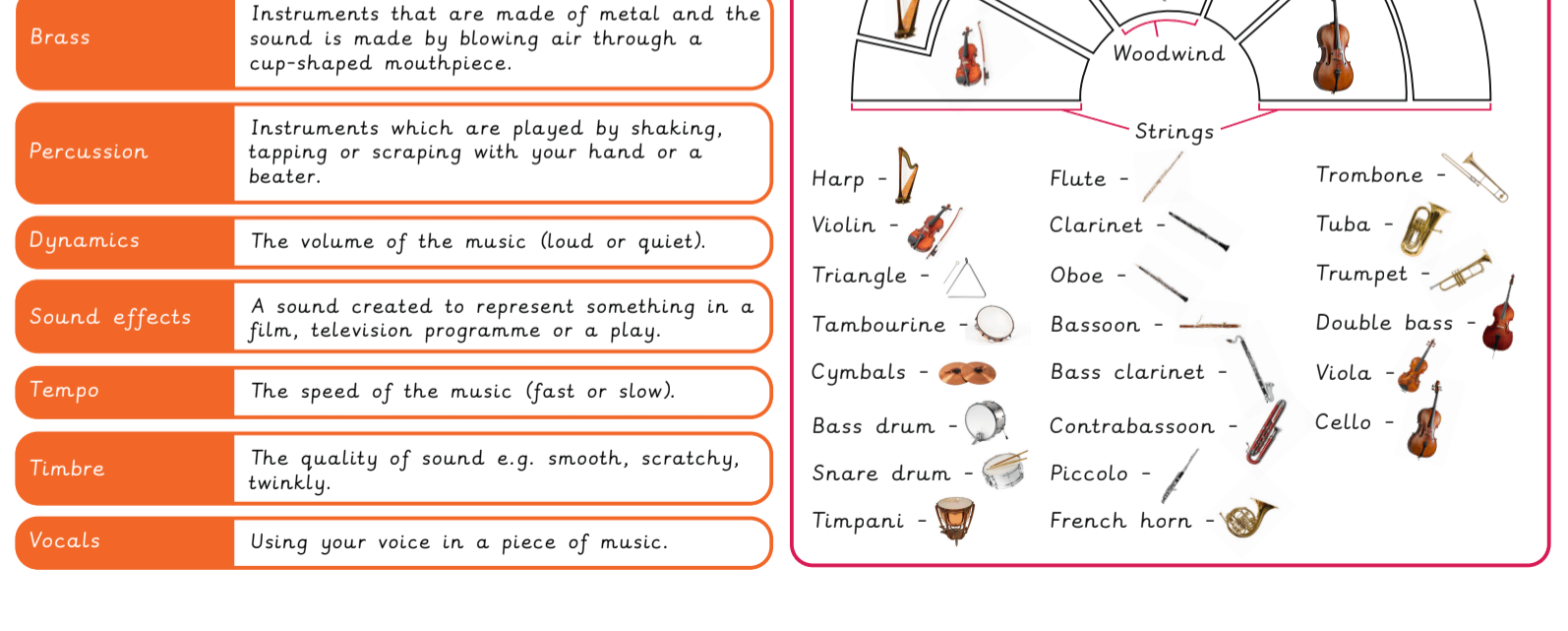
A Knowledge organiser that captures the essential knowledge and skills learnt throughout the now archived unit Music, Year 2, Orchestral Instruments.
This Music resource is designed to support the pupils as they explore the different families of orchestral instruments and their unique sounds. It introduces key vocabulary such as strings, woodwind, brass, percussion, and conductor, helping the pupils understand how instruments are classified and how they contribute to an orchestra’s overall sound. The pupils will also learn to identify instruments by their timbre and recognise their roles within orchestral performances.
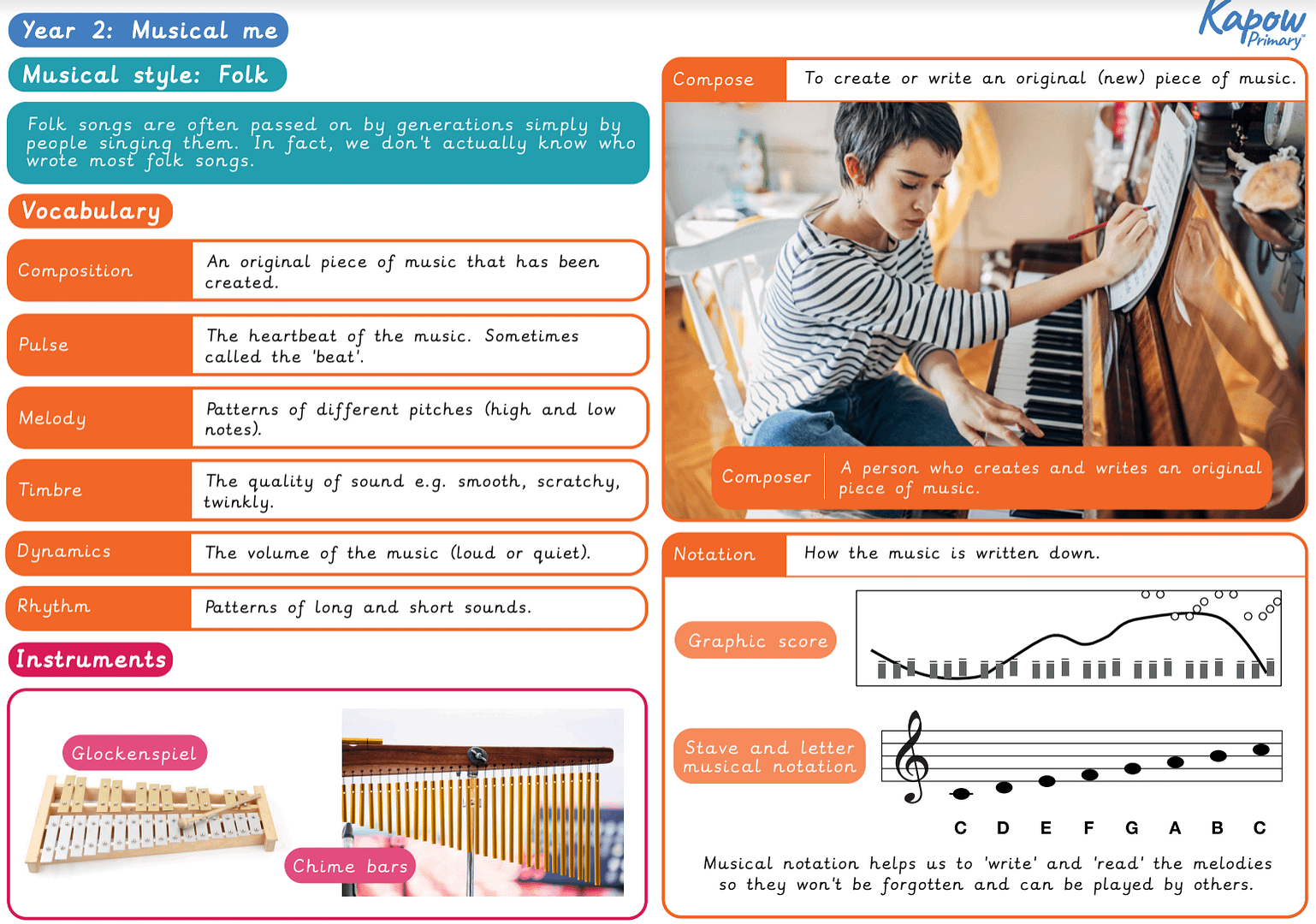
A Knowledge organiser that captures the essential knowledge and skills learnt throughout the now archived unit Music, Year 2, Musical Me.
This Music resource is designed to support the pupils as they explore self-expression through music and composition. It introduces key vocabulary such as rhythm, pulse, pitch, structure, and notation, helping the pupils understand how musical elements combine to create melodies and songs. The pupils will also learn to compose and perform simple vocal and instrumental pieces, using different dynamics and tempos to enhance expression.
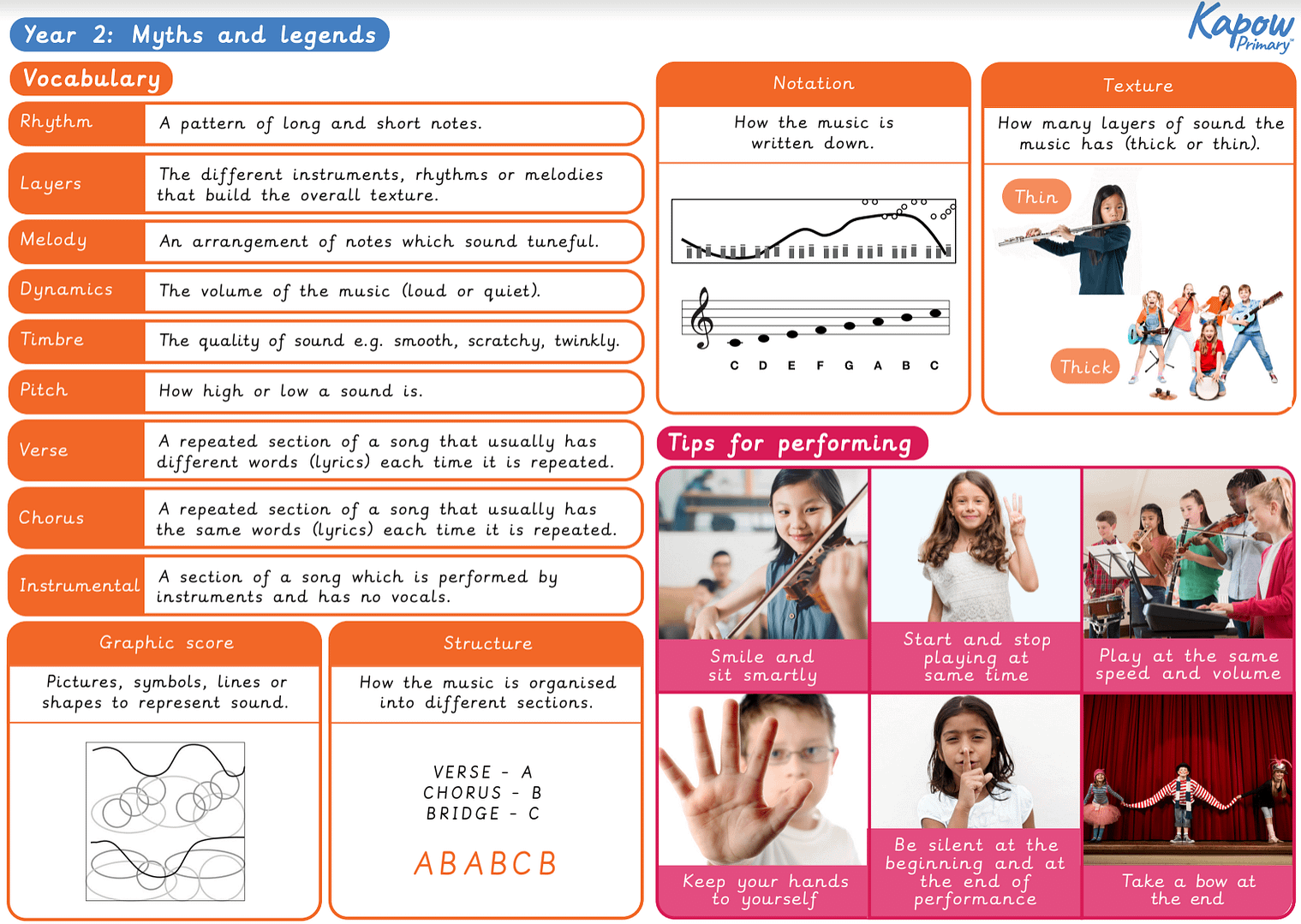
A Knowledge organiser that captures the essential knowledge and skills learnt throughout the now archived unit Music, Year 2, Myths and Legends.
This Music resource is designed to support the pupils as they explore how music is used to tell stories from myths and legends. It introduces key vocabulary such as rhythm, dynamics, pitch, motif, and texture, helping the pupils understand how musical elements create atmosphere and character. The pupils will also learn how composers use repeated themes and instrumentation to represent mythical creatures and legendary events.
Please note: This unit has now been replaced by the Year 2 unit *NEW* Structure (Theme: Myths and legends) and will no longer be updated.
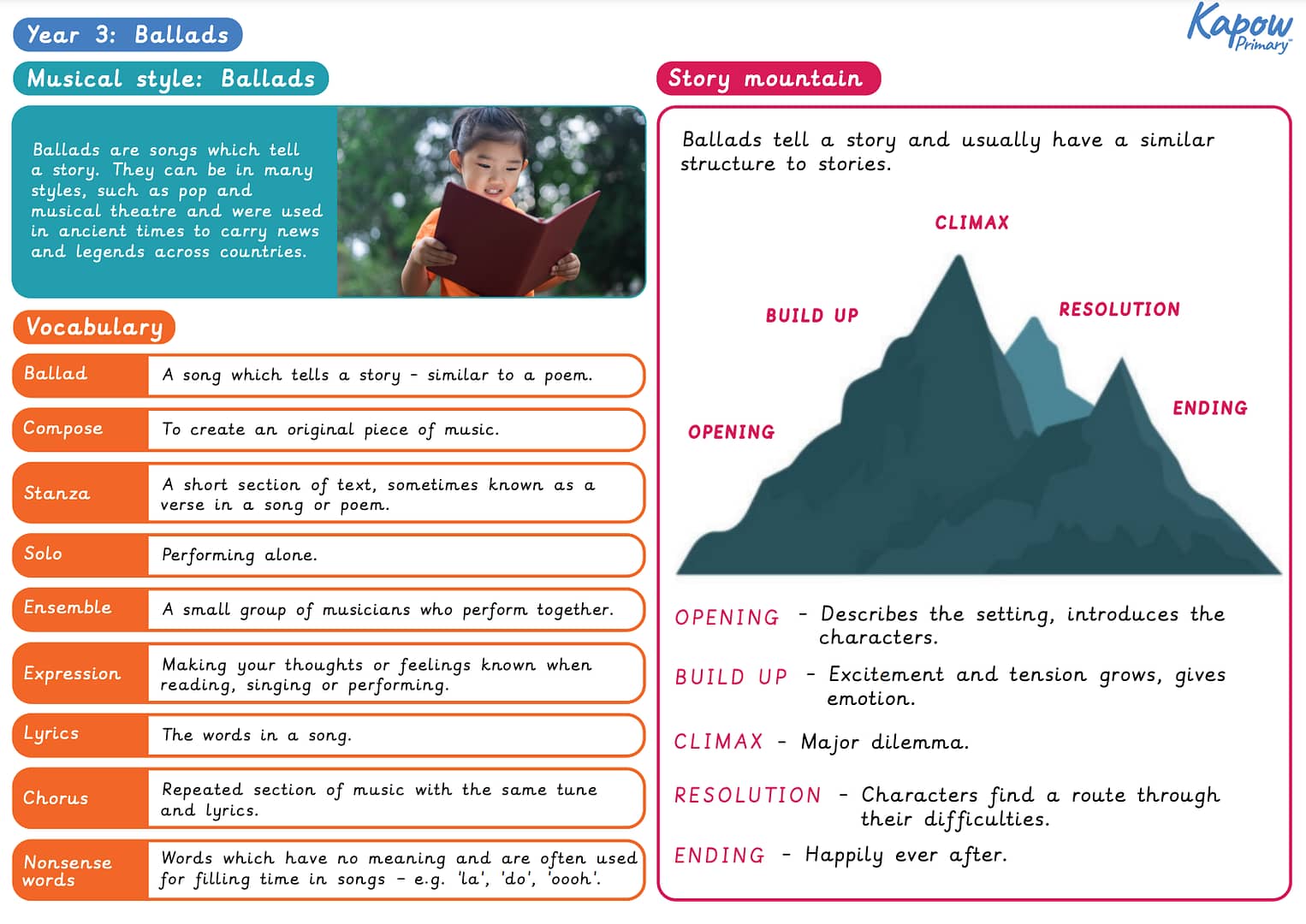
A Knowledge organiser that captures the essential knowledge and skills learnt throughout the unit Music, Year 3, Ballads.
This Music resource is designed to support the pupils as they explore ballads’ features and storytelling elements. It introduces key vocabulary such as verse, chorus, melody, dynamics, and tempo, helping the pupils understand how ballads convey emotion and narrative through lyrics and music. The pupils will also learn to identify and perform ballads, recognising their structure and expressive qualities.









